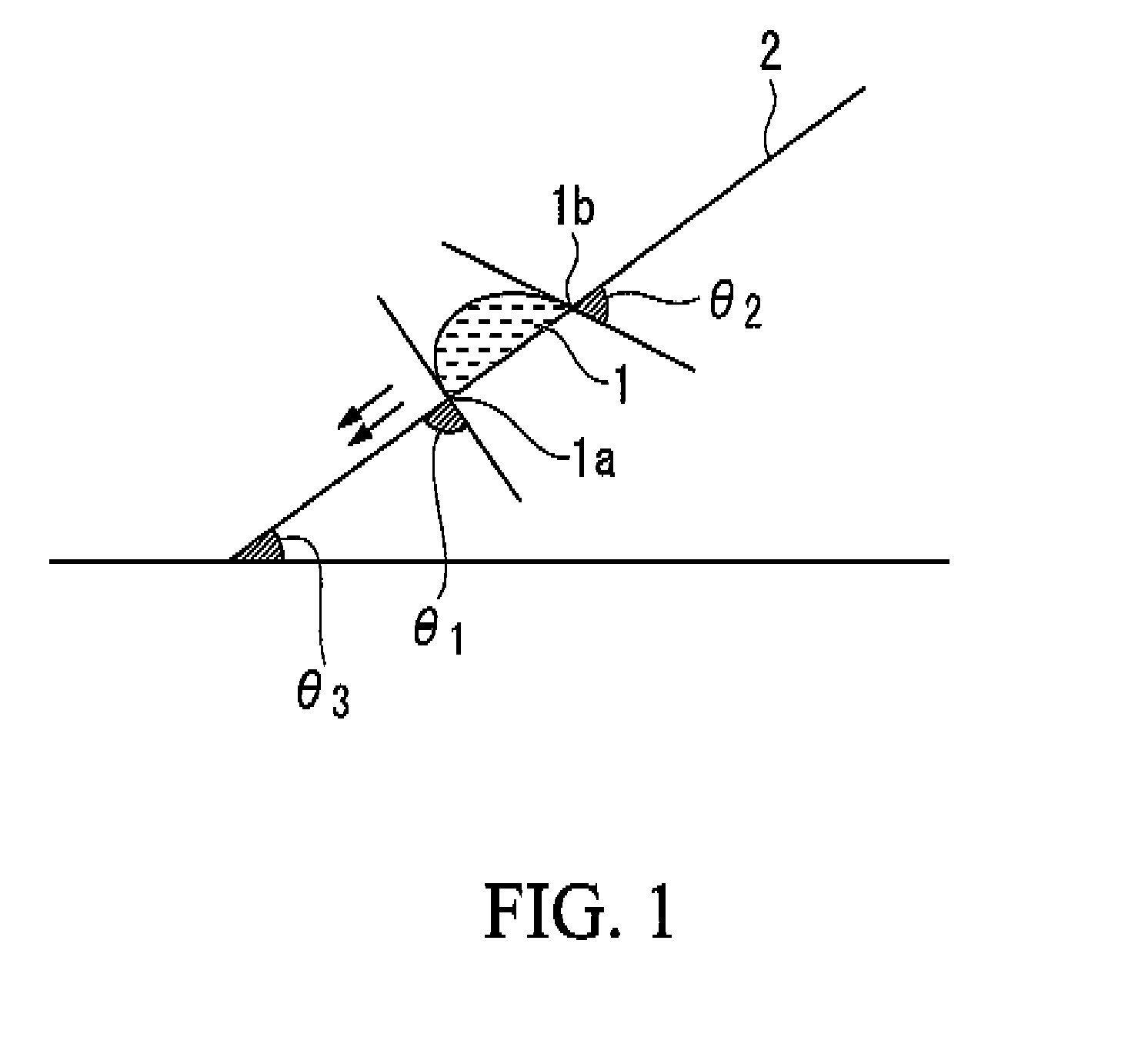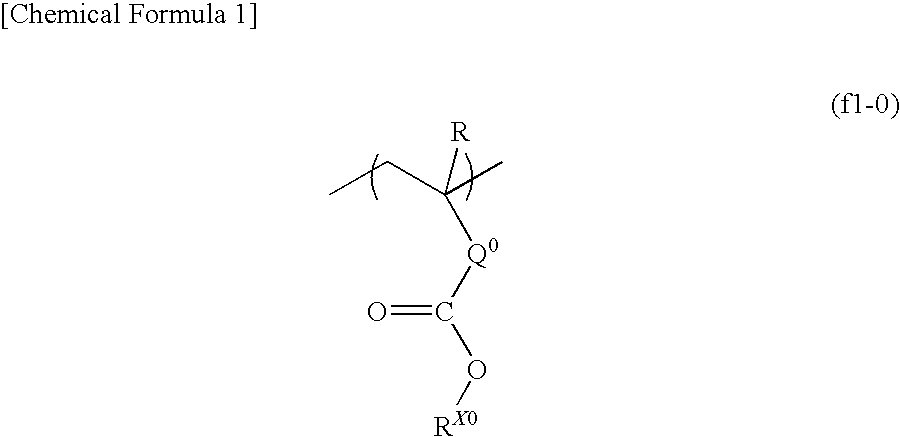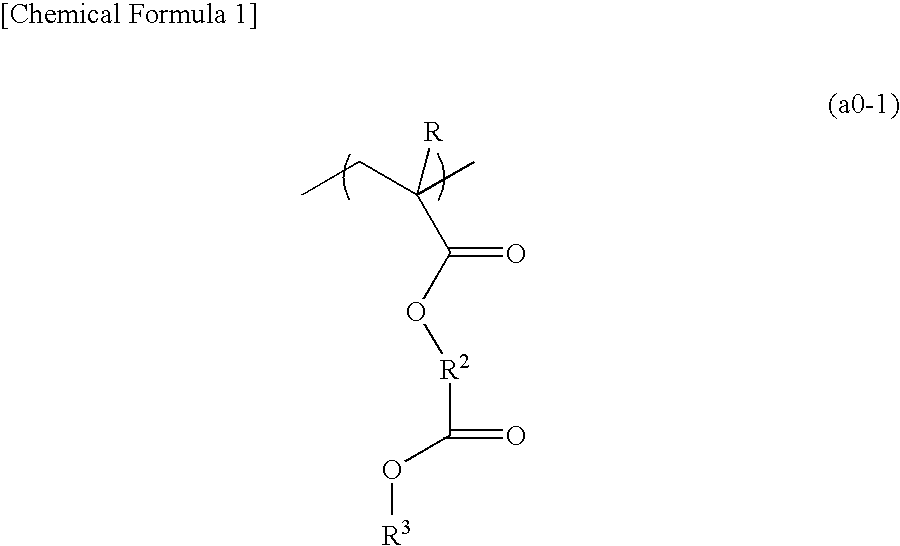Positive resist composition and method of forming resist pattern
- Summary
- Abstract
- Description
- Claims
- Application Information
AI Technical Summary
Benefits of technology
Problems solved by technology
Method used
Image
Examples
synthesis example 1
Monomer Synthesis Example 1
Synthesis of Compound (1)
[0709]300 ml of a THF solution containing 20 g (105.14 mmol) of an alcohol (1), 30,23 g (157.71 mmol) of ethyldiisopropylaminocarbodiimide (EDCI) hydrochloride and 0.6 g (5 mmol) of dimethylaminopyridine (DMAP) was added to a 500 ml three-necked flask in a nitrogen atmosphere, and 16.67 g (115.66 mmol) of a precursor (1) was added thereto while cooling with ice (0° C.), followed by stirring at room temperature for 12 hours.
[0710]After conducting thin-layer chromatography (TLC) to confirm that the raw materials had been consumed, 50 ml of water was added to stop the reaction. Then, the reaction solvent was concentrated under reduced pressure, and extraction was conducted with ethyl acetate three times. The obtained organic phase was washed with water, saturated sodium hydrogencarbonate and 1N—HClaq in this order. Thereafter, the solvent was distilled off under reduced pressure, and the resulting product was dried, thereby obtaining...
synthesis example 2
Monomer Synthesis Example 2
Synthesis of Compound (2)
i) Synthesis of 2-(2-(2-methyl-2-adamantyloxy)-2-oxoethoxy)-2-oxoethanol
[0714]37.6 g (494 mmol) of glycolic acid, 700 mL of dimethylformamide (DMF), 86.5 g (626 mmol) of potassium carbonate, and 28.3 g (170 mmol) of potassium iodide were added to a 2 L three-necked flask equipped with a thermometer, a cooling pipe, and a stirrer, followed by stirring at room temperature for 30 minutes. Then, 300 mL of a dimethylformamide solution containing 100 g (412 mmol) of 2-methyl-2-adamantyl chloroacetate was gradually added thereto. The resultant was heated to 40° C., and stirred for 4 hours. Following completion of the reaction, 2,000 mL of diethyl ether was added to the reaction mixture, followed by filtration. The resulting solution was washed with 500 mL of distilled water three times. Then, crystallization was conducted using a mixed solution containing 300 mL of toluene and 200 mL of heptane, thereby obtaining 78 g of an objective com...
polymer synthesis example 1
Synthesis of Polymeric Compound (1)
[0726]In a three-necked flask equipped with a thermometer and a reflux tube, 10.00 g (31.65 mmol) of a compound (1), 9.10 g (38.88 mmol) of a compound (3) and 4.05 g (17.18 mmol) of a compound (7) were dissolved in 34.73 g of methyl ethyl ketone (MEK) to obtain a solution. Then, 5.8 mmol of dimethyl 2,2′-azobis(isobutyrate) (V-601) as a polymerization initiator was added and dissolved in the obtained solution. The resultant was dropwise added to 19.29 g of MEK heated to 78° C. in a nitrogen atmosphere over 6 hours. Following completion of the dropwise addition, the reaction solution was heated for 1 hour while stirring, and then cooled to room temperature. The obtained reaction polymer solution was dropwise added to an excess amount of a methanol / water mixed solvent, and an operation to deposit a polymer was conducted. Thereafter, the precipitated white powder was separated by filtration, followed by washing with a methanol / water mixed solvent and...
PUM
 Login to View More
Login to View More Abstract
Description
Claims
Application Information
 Login to View More
Login to View More - R&D
- Intellectual Property
- Life Sciences
- Materials
- Tech Scout
- Unparalleled Data Quality
- Higher Quality Content
- 60% Fewer Hallucinations
Browse by: Latest US Patents, China's latest patents, Technical Efficacy Thesaurus, Application Domain, Technology Topic, Popular Technical Reports.
© 2025 PatSnap. All rights reserved.Legal|Privacy policy|Modern Slavery Act Transparency Statement|Sitemap|About US| Contact US: help@patsnap.com



